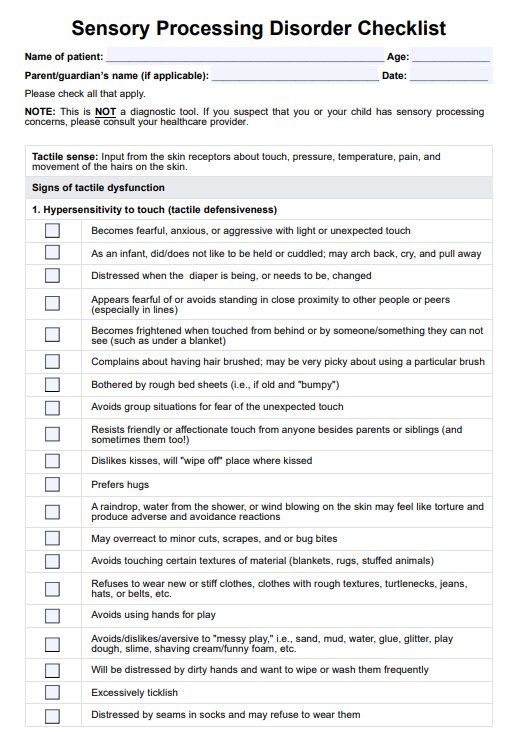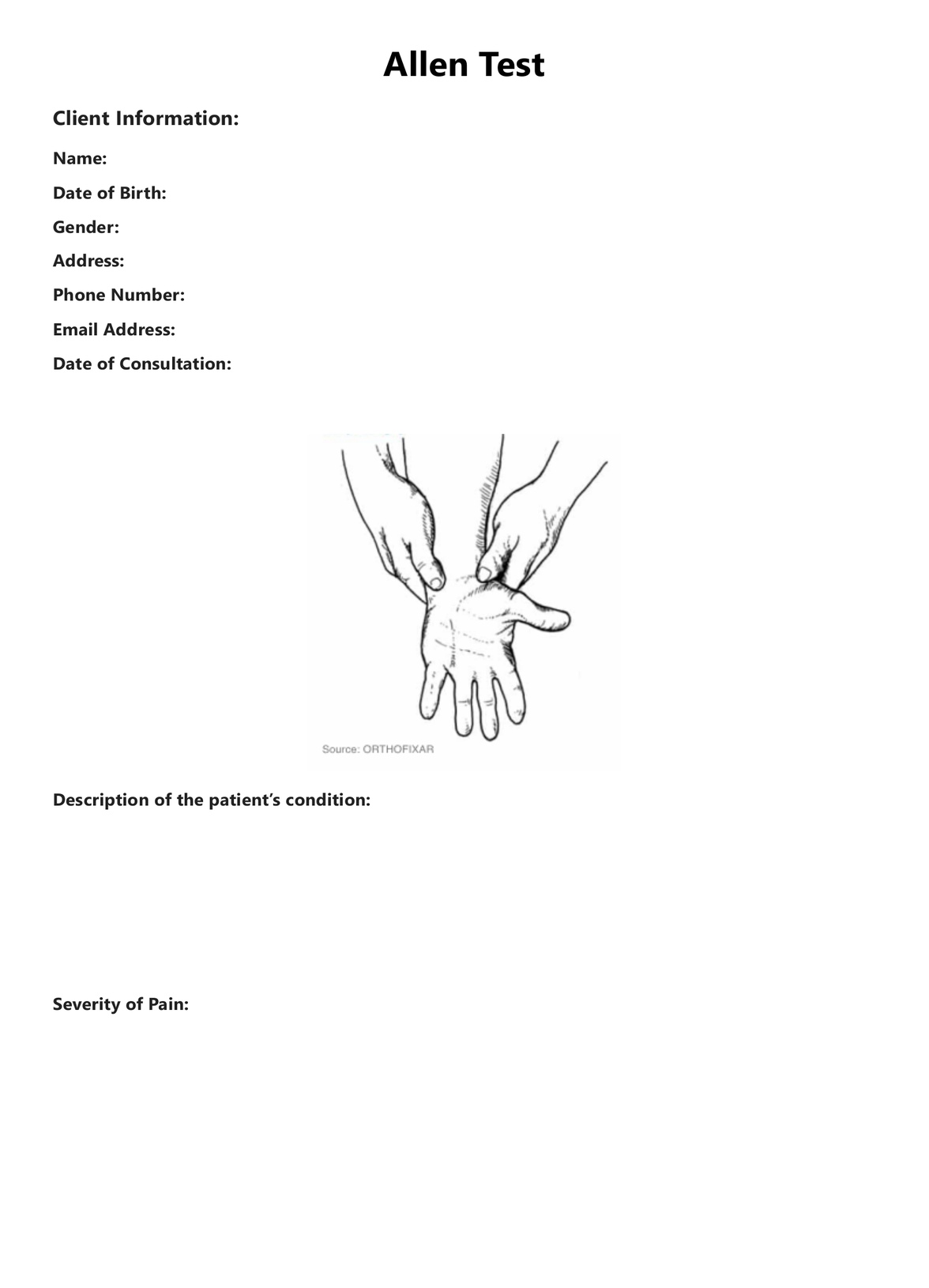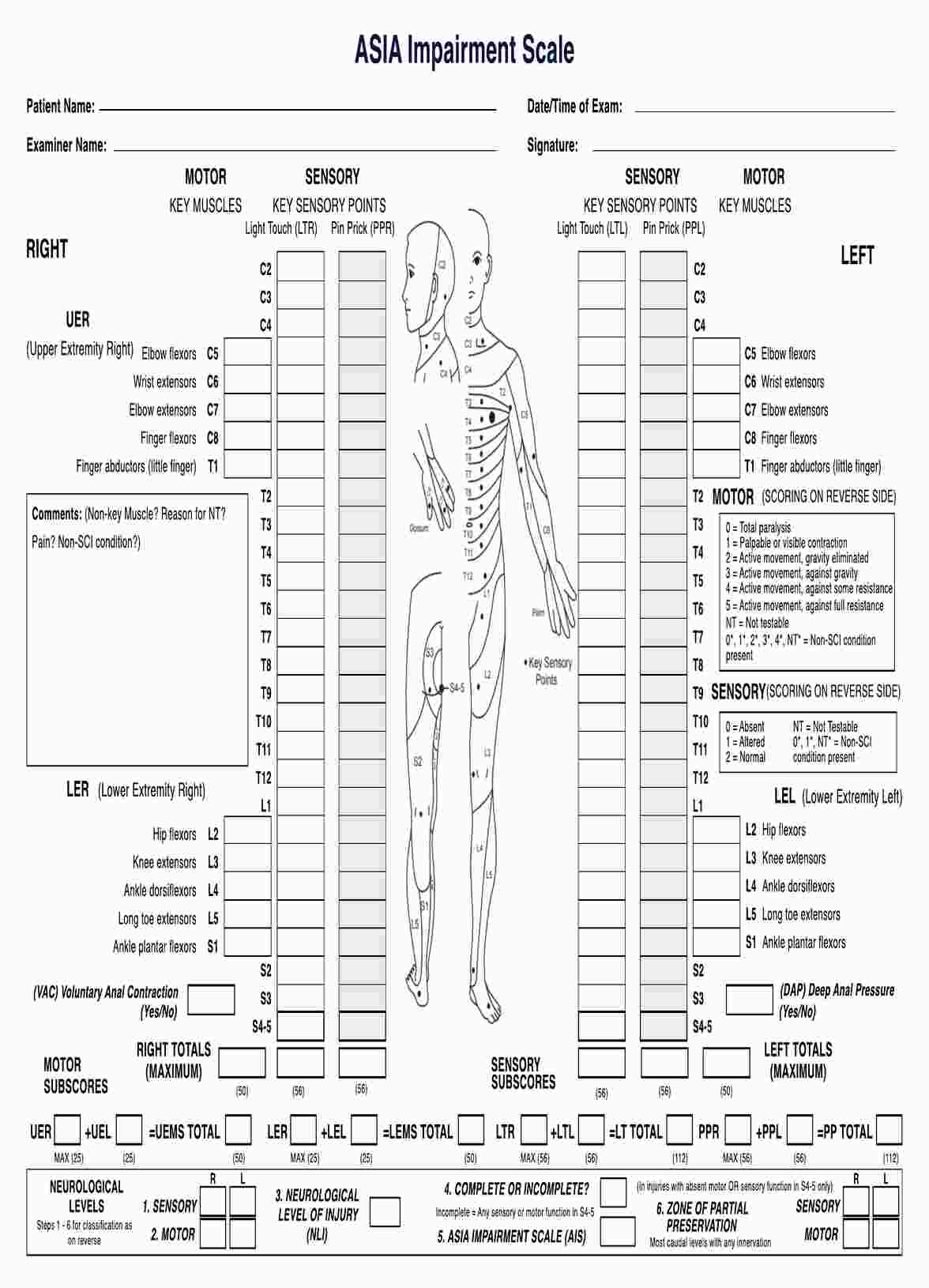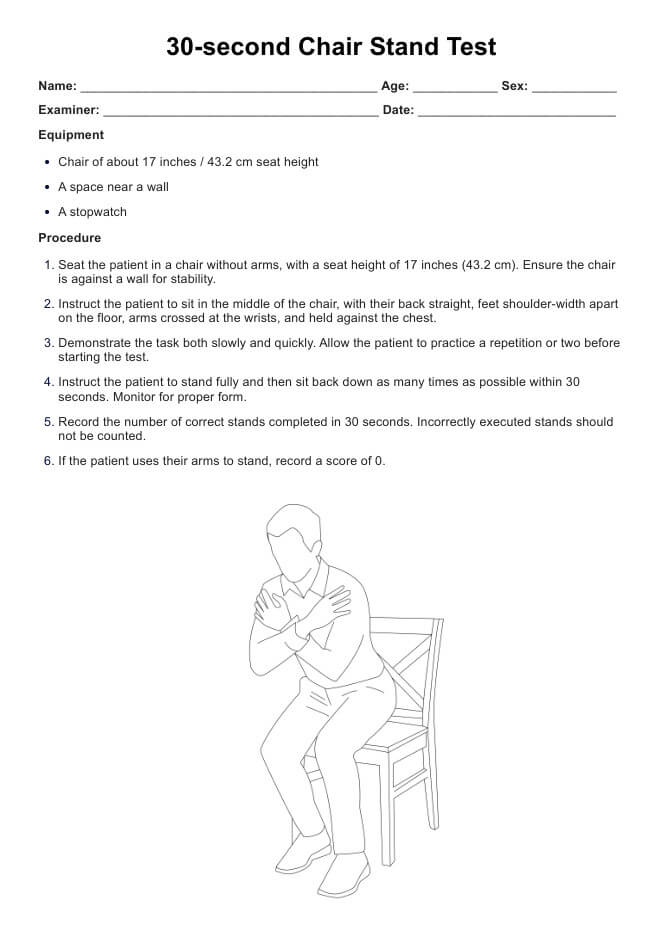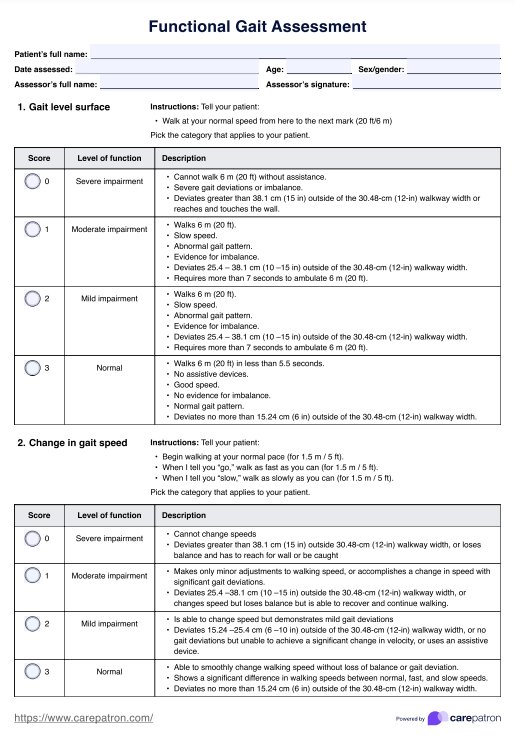Apgar Score Chart
Use our Apgar Score Chart template to assess newborn infants. Our guide will show you how to score it, interpret results, and more.


What is an Apgar Score Chart?
The Apgar test is an assessment done on newborn infants. Medical practitioners conduct this test a minute after babies are born to see if they handled the birthing process well and after 5 minutes to see if they are adjusting to the environment outside the mother's womb without much difficulty.
On rare occasions, physicians also use Apgar scores to assess infants 10 minutes after birth in case the infant encounters any complications. This assessment must be done immediately after birth and after 5 minutes to ensure immediate intervention, especially if the infant shows signs of asphyxiation, as asphyxiation results in poor neurologic outcomes.
The Apgar scoring system was named after its creator, Dr. Virginia Apgar. The name simultaneously serves as a mnemonic to help practitioners remember the five factors to check in a newborn infant. Here's a list of what each letter corresponds to:
- A = activity or muscle tone
- P = pulse or heart rate
- G = grimace or the infant's response to stimulation
- A = appearance or skin color
- R = respiration or breathing.
An infant can get a score of 0 to 2 for each criterion, with 0 being the lowest and 2 being the highest. A low Apgar score (3 and below) immediately after birth indicates that the infant is in dire need of medical care; for the 5-minute Apgar score, the threshold increases to 6. In general, however, a score of 7-10 is good.
Do note that newborn infants don't usually get a total score of 10 within the first minute because their hands and feet remain bluish until they warm up. A healthy preterm infant may also get a low score because they are immature.
Since this chart depends on the practitioner's observation, it can be quite subjective. It may also vary based on the infant's gestational age, weight, and congenital anomalies; it may also be influenced by the mother's medication and aneshesia.
Apgar Score Chart Template
Apgar Score Chart Example
How does this Printable Apgar Score Chart work?
Now that you know the 101 on this assessment, in case you need a digital or printable copy of the Apgar Score Chart, we've provided you with a step-by-step process of obtaining and utilizing our free template.
Step 1: Access the template
First, click the “Use template” button to open the template in the Carepatron app, which lets you customize it, fill it, print it, or share it. You can also press "Download" to save a non-customizable but fillable and printable PDF on your device's local drive.
Step 2: Conduct the test
Conduct the test as soon as you have the newborn infant in your arms or on a clean, comfy surface. Since you must do this within the first minute, it's best to remember APGAR when figuring out the order of checking.
To help you out, here's a list and recommended flow of what you have to do per letter:
- Activity - Check if there is flexion in the limbs.
- Pulse - Using your stethoscope, check if their heartbeat is at least 100 beats per minute.
- Grimace - Mildly pinch and observe if they respond by either grimacing, crying, pulling away, or the like.
- Appearance - Focus on the extremities and check if they are pink or have more of a bluish color.
- Respiration - Look at the rise and fall of their chest or listen well to the sound of their breathing/crying.
Step 3: Record and interpret the score
Tick the related boxes. Should the infant need immediate intervention, this step may come after assistance. Alternatively, if the infant is doing well, you can tick the scores in the table under the section “One Minute After Birth”. You can also ask a colleague to answer the test if your hands are full during that moment. If the infant has low Apgar scores at the first step, provide immediate medical care.
Step 4: Repeat 5 minutes after birth
After five minutes, the practitioner must repeat steps two and three to ensure the infant is healthy. In certain circumstances, you may have to repeat the test 10 minutes after birth.
Step 5: Store the record
After each test, if you need a copy to add to the infant's medical records, you can write down the scores on our editable chart.
When to use these Apgar Score Chart templates?
One can use these Apgar Score Chart templates when handling newborn infants. This is especially helpful when the mother has opted for a c-section, is experiencing a difficult birth, or if, from the get-go, one can see fluid in the infant's airway causing asphyxia. In these situations, one can expect that the Apgar score is likelier to be low however, it still shouldn't stop the practitioner from assessing the baby.
Though it is reliable to determine whether a child needs immediate intervention, it shouldn't be used to diagnose disorders or diseases. Furthermore, it shouldn't be used to predict long-term health problems, neurological issues, or infant mortality.
As a final reminder, tests such as the Apgar score chart may be helpful, but you, as the expert in that immediate situation, will know best when and at what time you should provide assistance. This is based on the fact that infants can be mistaken to have difficulty breathing when actually, the infant is taking quite a long period of time transitioning outside the womb.
Who is this Apgar Score Chart PDF for?
Any medical practitioner present during the mother's labor and delivery and in charge of caring for the infant can benefit from a PDF copy of this Apgar Score Chart. To enumerate, the Apgar Score Chart is designed for these physicians:
- Primary care doctors (family practitioners) or general practitioners
- Obstetrician-gynecologist (OB-GYN)
- Certified nurse-midwives
- Neonatologists
Benefits of this free Apgar Score Chart template
Here are some of the benefits of using this chart:
Quick and easy assessment tool
It'll only take a few minutes for a practitioner, especially a trained or experienced one, to understand and memorize the descriptions written in the chart for future tests. However, even beginners can utilize this chart because it doesn't require certification, nor does it contain medical jargon that requires additional research.
Should you need help, we've ensured that our template comes complete with the mnemonic and descriptions so you may easily refer to them in times of need.
Fast and reliable results
There's only a small window of time given to practitioners to intervene when there are complications after birth. Therefore, a test such as the Apgar Score chart is one of the first assessment tools to use on infants because it's not only reliable but also quick.
Early detection and intervention
Should the infant show signs of asphyxiation, this is one of the tests that'll help practitioners detect and immediately make a choice to intervene since the test must be conducted a minute after the infant is born.
Tracking progress
Whether or not the baby experiences complications, the Apgar Score Chart is a good assessment tool for tracking the infant's progress outside the womb since you have to do it twice and thrice if need be.
Fully digital
Having a fully digital template that can be stored in a secure EHR such as Carepatron can save a lot of time in printing copies and having space for these documents. Even better, if all of your documents are digital, you can collate them and keep them in a digital folder under the patient's name on Carepatron.
Commonly asked questions
A healthy Apgar score ranges from 7 to 10, indicating that the newborn is in good health and does not require immediate medical intervention. If a baby's Apgar score is in this range, it suggests that the infant is stable in terms of heart rate, muscle tone, reflexes, skin color, and respiratory effort, which are critical indicators of neonatal well-being.
An Apgar score of 0 to 3 is considered an emergency, signaling a critical condition that requires immediate resuscitative efforts. If a baby's Apgar scores are low, it indicates severe distress in the newborn, often necessitating interventions such as oxygen support or other medical assistance to stabilize the infant.
The 5 Apgar scores correspond to the following criteria: Appearance (skin color), Pulse (heart rate), Grimace (reflex irritability), Activity (muscle tone), and Respiration (breathing effort).



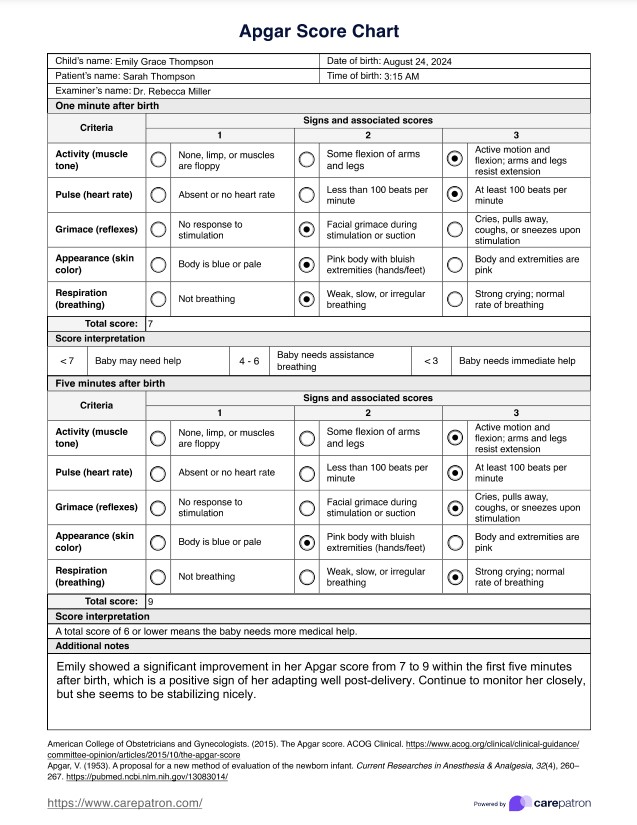




















-template.jpg)















































































